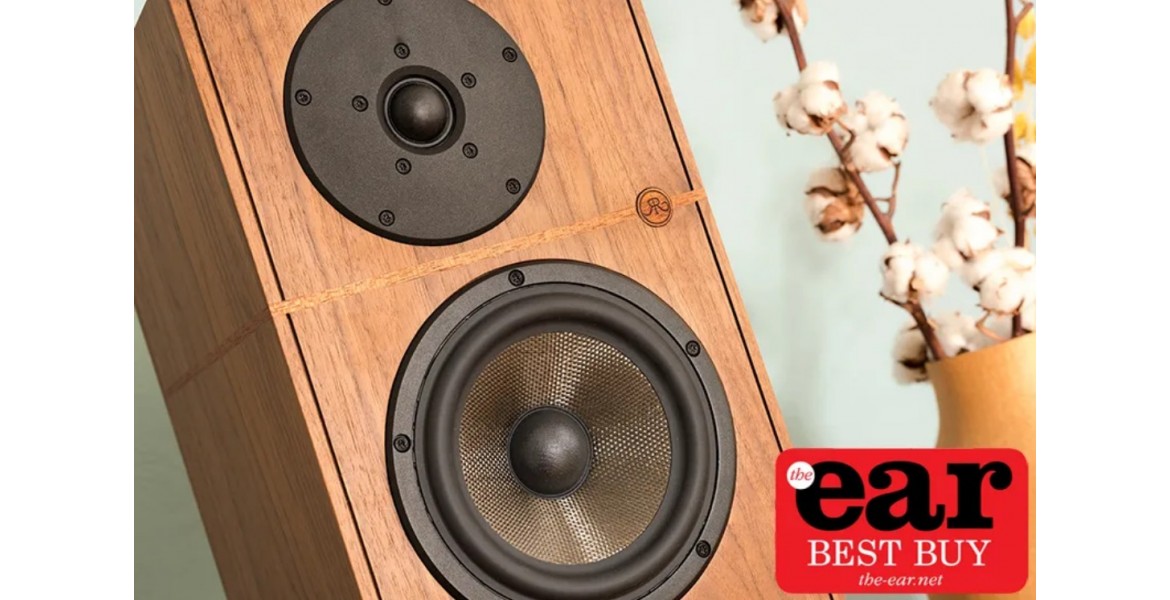- Home
- About us
- Blog
- Shop
- Brands
- ALL Brands List
- Acoustical Systems
- Analog Relax
- Antipodes Audio
- Astell & Kern
- Audio Solutions
- AudioByte
- AudioCircle
- Audiomica Laboratory
- Canary Audio
- Canor Audio
- Chameleon Audio
- Clarisys Audio
- CSPort
- Dan D'agostino
- Eversolo
- Ferrum Audio
- Fezz Audio
- Fonolab
- Glanz
- HiFiMAN
- HoloAudio
- LAB 12
- LAIV
- LampizatOr
- Magico
- Mega Acoustic
- Monrio Audio
- Origin Live
- Pachancko Labs
- Phasemation
- Pink Faun
- PLiXIR
- Qualiton
- Reed
- Remton
- Revival Audio
- Riviera Audio
- Rockna Audio
- Sbooster
- Shelter
- Sigma Acoustics
- Signal Projects
- SOtM Audio
- SPEC
- Takatsuki
- Takumi
- Tedeska
- Tellurium Q
- Trafomatic Audio
- Tsakiridis Devices
- Volumio
- Sales
- Second Hand Deals
- Account

The EAR net Review Atalante 3 Revival Audio
Revival Atalante 3: a high end bargain
Revival Audio Atalante 3 loudspeaker Life as an audio reviewer is always more satisfying when a product like the Atalante 3 sounds at least as good if not better in one’s own system as it did at a hi-fi show.
Such it was with this two-way standmount from a relative newcomer to market.
Revival Audio is based in Mulhouse, France close to the German border in the wonderful Alsace region.
Formed in 2022, a new company it might be but behind it lies a great deal of experience and professionalism spanning four decades and work across many well-known audio brands.
The co-founding figures behind the company are design engineer Daniel Emonts and CEO Jacky Lee.
Daniel brings over 30 years of experience and is the name behind many legendary transducers from the likes of Altec-Lansing, Focal and, most recently at Dynaudio.
He began building speakers aged just 14 and has dedicated his life to acoustics. Jacky Lee also worked at Dynaudio, ultimately as Chief Commercial Officer, having previously been with IBM in his home country, Taiwan. The duo look like the ideal partnership for a solid commercial engineering enterprise Revival Audio Atalante 3 review
Two models were launched initially in the Atalante range, the large three-way 5 and the smaller Atalante 3 which I heard making wonderful sounds at the inaugural Oslo hi-fi show earlier this year. In fact, it sounded so good under ‘show conditions’ that I had to try it in my own system.
Designed and built in France, the company prefers to make components in-house, rather than buying off-the-shelf.
To keep costs down, and the price really competitive, the cabinets are hand-crafted in the Far East and sent to Mulhouse for final assembly. It is a shrewd move because this almost LS5/9-sized speaker sells for about half the price of my similarly sized Harbeth M30.1s.
That’s a notable saving! Atalante 3 design Looking rather traditionally British in its design concept, and sounding anything but ‘French’ as we shall discover, the Atalante 3 is described as a two-way bookshelf loudspeaker, although the term is misleading since a large 45Hz rear reflex port makes the unit unsuitable for bookshelf placement.
No, these are standmount speakers and benefit from space around the cabinets to create a delightfully natural sound.
Combining a 28mm soft-dome tweeter, with patented technology, and what’s claimed to be the first basalt-sandwich construction mid/bass driver in a reflex cabinet, the design is packed with technical innovations.
The tweeter features built-in ARID (Anti Reflection Inner Dome) patented technology along with specialized back-chamber design, with the aim of absorbing over 95% of reflections.
The sandwich-design woofer is seen as the best balance between rigidity and light weight, with its high damping construction providing fast and smooth responses with tight bass dynamics.
The cone relies on an unusual material for this application, namely basalt, extracted from grey igneous lava stone, giving it sustainability credentials above all those plastic speaker cones.
The cone is a sandwich with basalt-fibre fabric as the top layer, a polymer glue with felt in the middle, and a customised foam-based cone as the bottom layer. Hundreds of hours of R&D were involved to determine the best-sounding solution here.
The cabinets are worthy of mention, finished as they are in a dark walnut veneer.
A split just above the midpoint allows for a distinctive inlay line around the box, meeting on the front baffle with a discreet laser-etched rosette for the Revival logo.
There is also branding to the outer side of each cabinet. Supplied as ‘mirror image’ cabinets (and reminiscent of a classic 1970s design), the tweeter on each speaker is offset, rather than vertically aligned to the woofer. This gives the option of having the tweeter either on the outside (probably ideal in smaller rooms) or on the inside to deliver more treble energy to the listening position.
The units are marked Left and Right although the user is free to choose of course. I followed orders and had the tweeters outermost but with one variant.
The grey fabric grilles are in two sections, one covering the main driver and a second the tweeter unit.
For optimum sound in my environment, I removed the lower grille portion but retained the upper ones.
Foam bungs are also supplied to plug the rear ports and reduce the bass extension, although I didn’t find them necessary.
The connections are a single set of binding posts connected to a crossover with “as few components as possible, but all that are needed”.
Sound quality Sitting comfortably on my lightweight open-frame stands, the Atalante 3s were easy to site in the room and benefitted from clear space from the walls which improved performance allowed the large rear port to function at its best.
Dedicated stands are available for those who need them although I used my Tonträger ones to good effect, toed-in towards the listening position ever so slightly.
My initial impressions were similar to those I had experienced in Oslo, namely an astonishing soundstage, neutral frequency response, superb drive unit and port integration, and a sublime midrange reminiscent of the very best studio monitors.
These are not typically ‘French-sounding’ with no pronounced treble, forward mid-band or booming bass.
No, we have here a sonic character that lives up to the Revival name.
Finding myself selecting a former French Number One hit appropriately enough on French-designed speakers, Vanessa Paradis’ Joe Le Taxi (recorded in 1987) was portrayed with a lively sense of realism and vigour.
My foot started to tap involuntarily as the Atalante 3’s timing credentials were revealed from this spirited performance; little wonder it became a bit hit. It’s an acquired taste, granted, but perfectly demonstrated the enormous soundstage these speakers generate, with width, height and depth all far beyond the cabinet edges.
We were off to a great start.
Back on safer ground, and another French musician in the shape of Erik Satie and his Gymnopédies (Aldo Ciccolini on EMI) where the Atalante 3s passed one of the acid tests of an accurate loudspeaker: making a piano sound like a piano.
Sounds easy, but so many transducers find this an impossible task.
As it was, I revelled in the exquisite playing which recognises the unassuming but ingenious musicality that Satie wrought in the pieces.
The sound was so wonderfully natural, and I felt as though piano and pianist really were there in the room with me, such was the level of realism generated.
The sound was described by one panel member as “bewitching” while I detected a real connection with the music which held a high degree of captivating physical presence between performer and listener.
Away from French repertoire, and larger-scale material in the form of Dvorák’s Eighth showed that the Atalante 3s can handle whatever is thrown at them.
The sensation and agility of the LSO, under Colin Davis, on this excellent 1999 recording was brought to the listening room.
It was here that the delightfully delicate treble reproduction was mentioned by more than one panel member; no harsh shrill metal cones here.
Instead, we are treated to a wonderful low-level detail when pianissimo, and yet full-scale dynamics when fortissimo.
An astonishing achievement for what is clearly a very well-engineered design which exhibited virtually no congestion from what is really a compact enclosure.
On to more raucous material, and here the low-frequency performance of driver, cabinet and port were shown to be class-leading.
The bass held solidly through Yello’s fantastically enjoyable album Flag from 1988; incidentally the music being played at the first hi-fi show I ever attended.
The soundstage was immense and, closing one’s eyes, it was hard to believe just how compact these speakers are given the enormous sound they create. Instruments and vocals all had ample space to both perform and to intertwine.
Bass was described by one panellist as ‘pumping’ while this Harbeth user just could not believe the extension being generated and how seamlessly the driver and port were integrated.
The Atalante 3 creates real deep-down bass that was punchy and tight but without that annoying modern habit of excessive upper-bass because a designer feels it will please the listener.
I lived for several weeks with the Atalante 3s as my everyday loudspeakers, sited either side of my TV where they showed their ability to satisfy this monitor-hungry audiophile with their accuracy and natural rendition across a whole range of material.
One of my key tests is human voice and here, where many a more costly speaker has failed dismally, the Atalante 3s just made everything seem so easy as my favourite voices sounded as I’ve come to know them, from Ian Carmichael as Lord Peter Wimsey to Leo McKern as Rumpole and Penelope Keith as the MP in No Job For A Lady.
Atalante 3 conclusion
The Revival Atalante 3s are one of those rare products that this reviewer really does not want to pack-up and return. In fact this is so unappealing that I have decided to buy a pair, my first speaker purchase in over a decade.
They are clearly well-engineered, beautifully constructed and offer a value-for-money option for high-quality listening.
The Atalante 3s did almost everything my beloved Harbeth M30.1s do, and some things that they can’t, in a package that is half the price.
This is what we must call a bargain.
Anyone looking for loudspeakers that re-create what the recording engineer intended should put these on their shortlist for a personal audition.
I will now be using them as my reference monitors.
